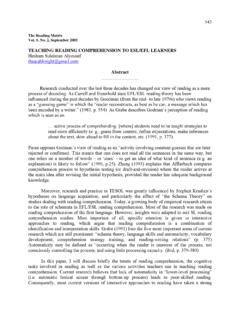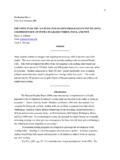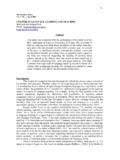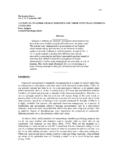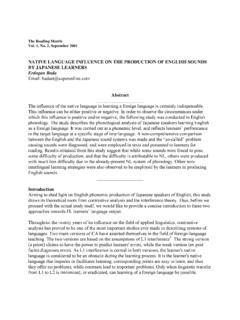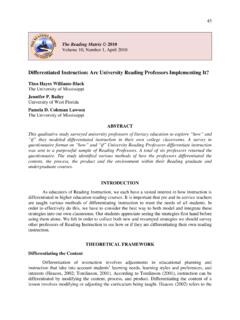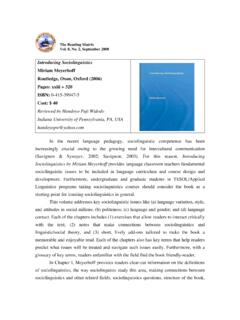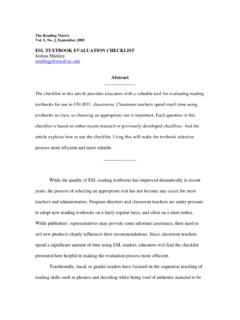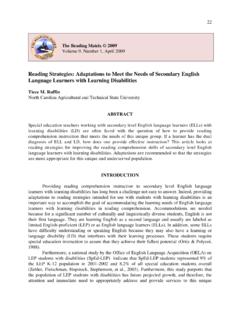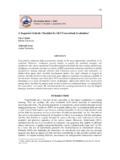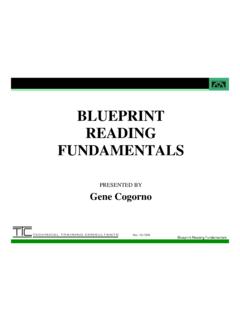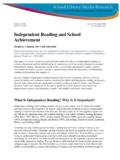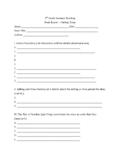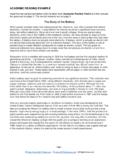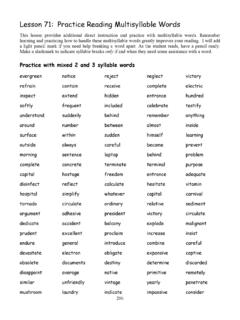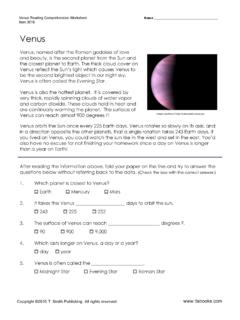Transcription of THE USE OF AUTHENTIC MATERIALS IN THE …
1 60 The reading Matrix Vol. 6, No. 2, September 2006 THE USE OF AUTHENTIC MATERIALS IN THE teaching OF reading Sacha Anthony Berardo Abstract _____ reading means different things to different people, for some it is recognizing written words, while for others it is an opportunity to teach pronunciation and practice speaking. However reading always has a purpose. It is something that we do everyday, it is an integral part of our daily lives, taken very much for granted and generally assumed to be something that everyone can do. The reason for reading depends very much on the purpose for reading .
2 The use of AUTHENTIC MATERIALS in the classroom is discussed, with the student benefiting from the exposure to real language being used in a real context. Other aspects which prove positive when using AUTHENTIC MATERIALS are that they are highly motivating, giving a sense of achievement when understood and encourage further reading . They also reflect the changes in the use of language, there is a wide variety of text types, they are also very versatile (they can be used in different ways to promote different skills) and can be used more than once as well as be updated.
3 Anything can be used as AUTHENTIC material but for developing reading one of the most useful resources is the Internet, with large amounts of varied material being easily accessible. One of the main reason for using AUTHENTIC MATERIALS in the classroom is once outside the safe , controlled language learning environment, the learner will not encounter the artificial language of the classroom but the real world and language how it is really used. The role of the teacher is not to delude the language learner but to prepare him, giving the awareness and necessary skills so as to understand how the language is actually used.
4 _____ Introduction When considering the use of AUTHENTIC MATERIALS , Widdowson wrote: It has been traditionally supposed that the language presented to learners should be simplified in some way for easy access and acquisition. Nowadays there are recommendations that the language presented should be AUTHENTIC (Widdowson 1990:67). asking whether their use is inconsistent with the principles of Communicative Language teaching (CLT). The aim of this paper will be to discuss the use of AUTHENTIC MATERIALS in the teaching of reading . reading Alderson defines reading as.
5 An enjoyable, intense, private activity, from which much pleasure can be derived, and in which one can become totally absorbed (2000:28). reading means different things to different people, for some it is recognizing written words, while for others it is an opportunity to teach pronunciation and practice speaking. However reading always has a purpose. It is something that we do everyday, it is an integral part of our daily lives, taken very much for granted and generally assumed to be something that everyone can do. 61 The reason for reading depends very much on the purpose for reading .
6 reading can have three main purposes, for survival, for learning or for pleasure. reading for survival is considered to be in response to our environment, to find out information and can include street signs, advertising, and timetables. It depends very much on the day-to-day needs of the reader and often involves an immediate response to a situation. In contrast reading for learning is considered to be the type of reading done in the classroom and is goal orientated. While reading for pleasure is something that does not have to be done.
7 For Nuttall (1996) the central ideas behind reading are: - the idea of meaning; - the transfer of meaning from one mind to another; - the transfer of a message from writer to reader; - how we get meaning by reading ; - how the reader, the writer and the text all contribute to the process. Readers process texts in two ways, either Top-Down or Bottom-Up. Bottom-up processing is when the reader builds up meaning by reading word for word, letter for letter, carefully scrutinizing both vocabulary and syntax. This is often associated with poor or slow readers, but can sometimes occur when the readers own schema knowledge is inadequate.
8 Top-Down processing is the opposite, where a global meaning of the text is obtained, through clues in the text and the reader s good schema knowledge. This is often associated with a good reader, who does not read word for word but quickly and efficiently. The most comprehensive description of the reading process are interactive models, ..in which every component in the reading process can interact with any other (Alderson 2000:18) , combining elements of both bottom-up and top down models. reading is considered to be an interactive process (a conversation between writer/reader, even though the writer is not present) and for it to occur both processes are necessary, top-down to predict the meaning and bottom-up to check it.
9 The two are therefore complementary ways of processing a text. Our knowledge and experiences of the world around us also influence how a text is read or processed, this is known as schema theory (Bartlett 1932). It operates actively and constructively, with our knowledge of the world being a continuous process that upon receiving new information interprets it on the basis of what is already known. Good readers have an idea of what is normal (linguistically and conceptually) and of how the world works, therefore when reading they make use of existing schemata and then modify them with any new information.
10 They also have expectations or make predictions before reading that are either reinforced, challenged or modified after reading . Schemata has also been described as ..cognitive constructs which allow for the organization of information in the long term (Widdowson 1983:34). Often a writer will presume that the target reader has the relevant schemata to read the text and will therefore leave certain facts out or unstated (presuppositions) but this creates problems when the writer and reader do not share the same relevant schema. AUTHENTIC MATERIALS & Authenticity: Sources and Choices AUTHENTIC texts have been defined as.
